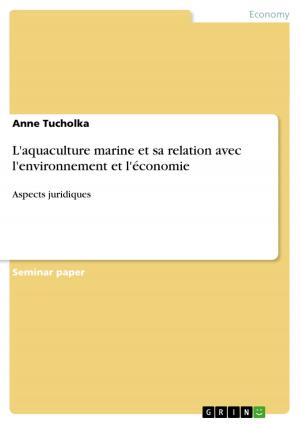That English has no diminutives is a common myth - based on Klaus P. Schneider's book 'Diminutives in English'
based on Klaus P. Schneider's book 'Diminutives in English'
Nonfiction, Entertainment, Drama, Anthologies| Author: | Monika Rusek | ISBN: | 9783638816847 |
| Publisher: | GRIN Publishing | Publication: | July 6, 2007 |
| Imprint: | GRIN Publishing | Language: | English |
| Author: | Monika Rusek |
| ISBN: | 9783638816847 |
| Publisher: | GRIN Publishing |
| Publication: | July 6, 2007 |
| Imprint: | GRIN Publishing |
| Language: | English |
Seminar paper from the year 2005 in the subject English Language and Literature Studies - Linguistics, grade: 1,3, University of Potsdam, 4 entries in the bibliography, language: English, abstract: Introduction Several attempts have been made to analyse diminutives. This essay will provide a morphological approach. Morphology, the study of word-formation was influenced by three main sources in the past and each of these sources has contributed to the study of diminutives. Now, the three sources Bauer (1988: 5) and Schneider (2003: 29) mention are a) the philological grammar or traditional grammar , b) the structuralist schools of Linguistics or structuralism , and b) the transformational grammar or generative grammar . My analysis will be based on the approach Bauer (1988) made, and additionally on the approach Schneider (2003) made. This essay focuses on synthetic diminutive formation in English. Questions like what are diminutives, what grammatical approaches have been made to diminutives, what are its formation processes and what is the meaning diminutives convey, are treated in the first section. The second section deals with some grammatical aspects of English diminutives such as the status of diminutives, the inventory of diminutive suffixation, the subclasses of diminutive suffixes, the historical variation of diminutives and finally their productivity. In the third section of this essay a close survey of four diminutive suffixes is provided. This survey tries to describe the rules and restrictions that govern diminutive formation. It is based on a pure morphological approach. The suffixes are analysed in detail, partial according to Bauer (1988) and partial according to Schneider (2003: 4.2 - 4.2.6). That means that the phonological shape of the suffix will be given and its different spellings if there are any. In addition, the history of the suffix, its formation rules for creating diminution, and finally its semantics are analysed, too. Afterwards, the fourth section shortly enters into the peculiarity of multiple and competing diminutives in English, giving the suffixes {KIN}, {POO}, and {POP} as examples. And at the end, I will provide a conclusion of my analysis that also states why an exclusively synthetic approach to diminutives is not sufficient when one wants to get to know the whole truth about English diminutive formation.
Seminar paper from the year 2005 in the subject English Language and Literature Studies - Linguistics, grade: 1,3, University of Potsdam, 4 entries in the bibliography, language: English, abstract: Introduction Several attempts have been made to analyse diminutives. This essay will provide a morphological approach. Morphology, the study of word-formation was influenced by three main sources in the past and each of these sources has contributed to the study of diminutives. Now, the three sources Bauer (1988: 5) and Schneider (2003: 29) mention are a) the philological grammar or traditional grammar , b) the structuralist schools of Linguistics or structuralism , and b) the transformational grammar or generative grammar . My analysis will be based on the approach Bauer (1988) made, and additionally on the approach Schneider (2003) made. This essay focuses on synthetic diminutive formation in English. Questions like what are diminutives, what grammatical approaches have been made to diminutives, what are its formation processes and what is the meaning diminutives convey, are treated in the first section. The second section deals with some grammatical aspects of English diminutives such as the status of diminutives, the inventory of diminutive suffixation, the subclasses of diminutive suffixes, the historical variation of diminutives and finally their productivity. In the third section of this essay a close survey of four diminutive suffixes is provided. This survey tries to describe the rules and restrictions that govern diminutive formation. It is based on a pure morphological approach. The suffixes are analysed in detail, partial according to Bauer (1988) and partial according to Schneider (2003: 4.2 - 4.2.6). That means that the phonological shape of the suffix will be given and its different spellings if there are any. In addition, the history of the suffix, its formation rules for creating diminution, and finally its semantics are analysed, too. Afterwards, the fourth section shortly enters into the peculiarity of multiple and competing diminutives in English, giving the suffixes {KIN}, {POO}, and {POP} as examples. And at the end, I will provide a conclusion of my analysis that also states why an exclusively synthetic approach to diminutives is not sufficient when one wants to get to know the whole truth about English diminutive formation.















